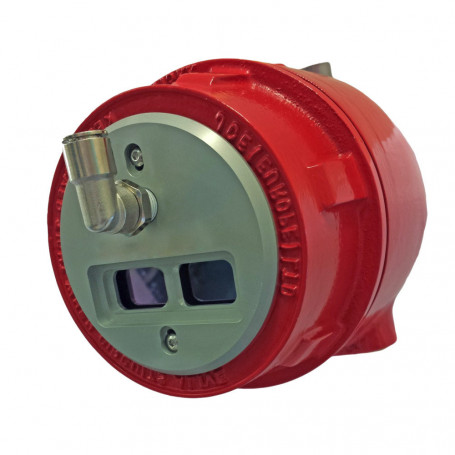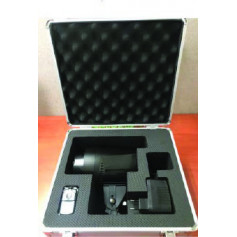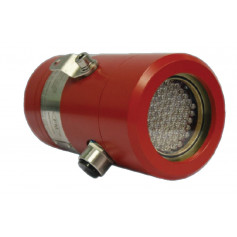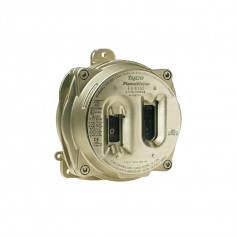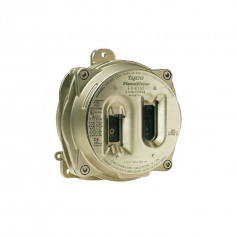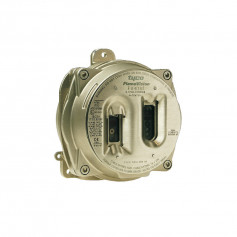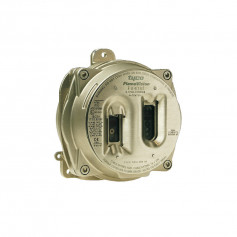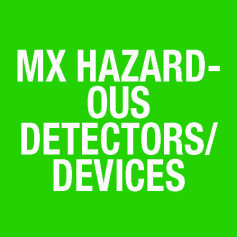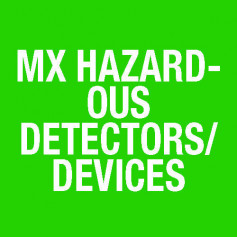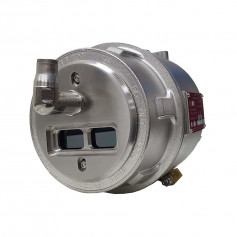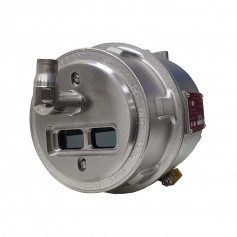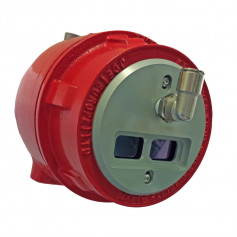Flame Detection
- Fire Sprinklers
- Standard Coverage
- Commercial Extended Coverage
- Storage Sprinklers
- Residential Sprinklers
- Dry Barrel Sprinklers
- Special Sprinklers
- Sprinkler Accessories
- Spray Nozzles / Window Protection
- Wet Pipe Systems
- Dry Pipe Systems
- Deluge Systems
- Preaction Systems
- Model G Preaction Systems
- Single Interlocked – Pneumatic Release
- Single Interlocked – Electric Release
- Double Interlocked – Pneumatic/Pneumatic Release
- Double Interlocked – Electric/Pneumatic Release
- Double Interlocked – Electric/Pneu-lectric Release
- Components and Accessories (general)
- Accessories (Pneumatic Release)
- Accessories (Hydraulic Release)
- Accessories (Electric Release)
- Alarm Devices
- Special Valves and Trim
- Valves and Systems
- Foam Systems and Accessories
- Foam Systems
- Concentrate Control Valves and Trim
- Valve Trim for Premixed Foam Systems
- Release Trim Packages
- Foam Concentrates
- Accessories, Foam Concentrates
- Proportioning Devices
- Discharge Devices
- Bladder Tanks
- Double Wall (SAFE) Atmospheric Storage Tanks
- Single Wall Atmospheric Storage Tanks
- Atmospheric Storage Tank Optional Equipment
- FoamPak Foam Pump Skid, 60Hz, Single and Dual
- FoamPak Foam Pump Skid, 50Hz, Single and Dual
- FoamPak Accessories
- Miscellaneous
- Portable Fire Equipment
- Fire Detection Systems
- Addressable Fire Alarm Systems
- Vigilant MX1 Addressable Panels
- MX1 Addressable Fire Panels
- AS1668 Controls and Gas Controls for MX1
- Addressable Detection & 850EMTK Programmer
- Addressable Modules and Field Devices
- Graphic Monitoring Software - XLG Client Server
- Vigilant Empty Cabinets & Battery Boxes
- IP Interface Networking
- MX Hazardous Detectors / Devices
- Documentation and Manuals
- Vigilant MX4428 & F4000 Addressable Systems
- ASE Parts
- Vigilant MX1 Addressable Panels
- Emergency Warning Systems
- QE20 EWCIE and QE90 EWIS
- Occupant Warning Systems
- Grade 2 and 3 EWS T-Gen2 AS4428.16 Approved
- Grade 2 and 3 EWS T-Gen2 AS4428.16 Approved
- Older Style OWS Amplifiers
- Evacuation Speakers
- WIP Phones & WIP Cabinets
- VOX Speech Intelligibility Test Kits
- Miscellaneous Tools & Items
- Conventional Fire Alarm Systems
- Maintenance Testing Equipment
- Flame Detection
- Ancillaries
- Cabinets
- Speaker Testing Equipment
- Miscellaneous Spare Parts
- Coltraco - Ultrasonic & Safety Instrumentation
- Photoelectric Smoke Alarms Stand Alone – Battery Powered
- OSID Emitters & Imagers
- Anti-Tamper Device
- FBA
- Gas Panel Signage
- Looms and Ribbon Cables
- Power Supplies
- Addressable Fire Alarm Systems
- VESDA ASD Detectors
- VESDA & FAAST FLEX Detectors
- VESDA Life Expectancy 2015
- Xtralis AS1851.2012 Maintenance
- VESDA LCD Programmer & High Level Interfaces
- VESDA-E Backward Compatibility Table - Firmware Versions
- Filters & Spare Parts
- VESDA Software
- Pipe and Fittings
- Automatic Air Purging System
- 19" Rackmount Configurations
- Gas Detection for VESDA
- VESDA Remote Displays
- Power Supplies
- VSM4 Configuration & Monitoring Software
- VESDA Documentation & Manuals
- VESDA Life Expectancy 2015
- Xtralis AS1851.2012 Maintenance
- VESDA-E Backward Compatibility Table – Firmware Versions
- VESDA Product Manuals & Data Sheets
- VESDA Technical Tips
- VESDA Maintenance & Troubleshooting
- VESDA Design & Commissioning
- VESDA Industry Documents
- VESDA Aspirated Smoke Detection for Impulse (Jet) Fans in Carparks
- VESDA Refrigerated Cold Storage Facilities - Design Guide & Information
- VESDA Case Studies
- VESDA Movies
- Smoke Bombs & Smoke Pens
- FAAST FLEX Documentation & Manuals
- Suppression Systems
- Hangers & Fasteners
- Exit & Emergency Lighting
- Foam Products
- Electrical Products
- Steel Pipe & Fittings
- Alarm Devices & Monitoring
- Signage & Blazons
- Tools & Accessories
Infra-Red Transit FLAME Sensor in Aluminium Alloy Housing
PEW-IRHTFD-HT
- Detection of ember and flame of high Temperature product
- Air purged system for dusty environments with air pressure monitoring
- Isolated Detectors for Maximum reliability
- Single / Coincidence voting output
- Timed auto reset / coincidence analyser circuit
- Tuned response � solar blind
- Voting Logic & Latching options
- Alarm & Trip Functions
- Fault Monitored, with Test & Reset push Buttons
- Field Programmable
- Volt free relay contact output operation selectable as standard
- Two wire operation - Can be powered by direct connection to standard fire trigger circuits�
- Comes complete with mounting bracket
Click to download brochure!
This product is no longer in stock
Availability date:
- Detection of ember and flame of high Temperature product
- Air purged system for dusty environments with air pressure monitoring
- Isolated Detectors for Maximum reliability
- Single / Coincidence voting output
- Timed auto reset / coincidence analyser circuit
- Tuned response � solar blind
- Voting Logic & Latching options
- Alarm & Trip Functions
- Fault Monitored, with Test & Reset push Buttons
- Field Programmable
- Volt free relay contact output operation selectable as standard
- Two wire operation - Can be powered by direct connection to standard fire trigger circuits�
- Comes complete with mounting bracket
Click to download brochure!
Features
- Auxiliary Input: PSU / Charger etc.
- Current: Relay mode: 11mA Quiescent
- Material: Aluminium Alloy LM25
- Detectors: 2 off isolating sensors
- Temperature: 20�C to +60�C
- Voltage: 20-30V DC
- Weight: 3kg (sensor head)
- IP Rating: IP66
- Outputs: Alarm/trip contact: 2 Pole C/O Fault contact: 1 Pole C/O Rating: 30V DC - 500mA
- Purge Air: Input Fitting: 10mm Compressed Air Hose Adaptor Pressure: 2.5 psi to 10 psi Minimum Delivery: 30 litres/min
- Sensitivity: 4 levels
- Spectral Filter: 4.2 - 4.7 ?m (narrow band)
- Transit Speed: 0.5 to 6 m/s
Product Information
Infra-red transit flame sensors are designed to trigger an alarm if the material they are monitoring exceeds a temperature of 240�C. Sensitivities can also be set above this threshold. The sensor triggers as the material reaches the ember or flame condition. Material being transported can be monitored on conveyor systems running at speeds of between 0.5 and 6m/s.
The sensors employ enhanced infra-red monitoring technology to analyse the level of IR emissions in the narrow band of 4.2-4.7?m. As the sensor is tuned to this band it is �solar blind� meaning the �background� and �transient� IR spectra are discriminated. This provides enhanced false alarm immunity.
Infra-Red Transit Flame Sensor for hazardous areas. IECEx/ATEX approved for Zones 1, 2 & 21, 22
This High Temperature Transit Flame Sensor monitors high temperature materials (up to 240� on highest sensitivity), being transported on conveyor systems at speeds of between 0.5 and 6m/s, and triggers as the material reaches the ember or flame condition.
The sensor employs enhanced infra-red monitoring technology that analysis the levels of IR emission in the narrow band of 4.2-4.7?m. As the sensor is tuned to this band it is �solar blind� meaning the �background� and �transient� IR spectra are discriminated. This provides enhanced false alarm immunity.
This unit is specifically designed for hazardous areas and is IECEx / ATEX approved for Zones 1, 2 & 21, 22.
Air purging from a compressed air feed is used to maintain a lens cleaning system that ensures the prevention of dust settling on the sensor window.
This unit incorporates within the unit a user programmable SIL switch. Option selection includes detector sensitivity settings, auto/manual reset sequence selection and single/coincidence voting from the two individual internal detectors for the alarm trip shutdown outputs.
The sensor air pressure and signal cable connections are fault monitored and fail safe. The controller incorporates an auxiliary fault input and common fault output contact.
Standard / Low Power Mode
The unit can be used in two principle operating modes. Either relay mode, with its own 24 Vdc power supply or in low power mode (as shown below), see datasheet for further details.�The sensor is located above or beside the materials transit path (conveyor, roadway, etc.) by means of the adjustable mounting bracket and aligned such that the monitored hazard passes through the sensor�s field of view. The distance and angle of the sensor determine the width of the monitored path.
Sensitivity
The table below shows the width of the monitored product at the Lowest and Highest sensitivity settings. This is based on the sensor mounted 1m above Conveyor at 45� angle. Exact response is dependant on the emissivity factor of the monitored material, sensor orientation and target speed.�
| Sensitivity Level | Monitoring Width |
| Lowest | 0.6m |
| Highest | 1.6m |
Air Purging
All infra-red transit heat and flame sensors feature air purging from a compressed air feed. This is used to maintain a positive air pressure across the sensor window to prevent dust settling. The air supply is monitored by a pressure switch which signals a fault status if the air supply fails.
Applications
- Food Processing
- Tobacco Processing
- Conveyors
- Waste Recycling Conveyors
- Baggage Handling
- Radio Frequency Drying Systems
- Microwave Drying Systems
- Waste Drying Systems
- Drying Conveyors
